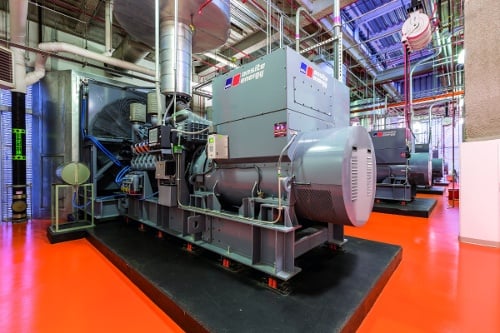The first three chapters of NFPA 110 cover information that is useful to help facility managers, installers, design engineers, and manufacturers understand what NFPA 110 covers and does not cover, as well as, provides official definitions used throughout the standard.
- Chapter 1 - Aids in establishing a framework for using and applying the standard
- Chapter 2 - Lists mandatory publications referenced within the NFPA 110 standard
- Chapter 3 - Contains official NFPA definitions and general definitions
It is important for both the user and the authority having jurisdiction (AHJ) to be speaking the same language when discussing a requirement in NFPA 110. Therefore, understanding the definitions contained in Chapter 3 are critical to understanding the NFPA 110 standard.
A few important definitions to know are:
Emergency Power Supply (EPS) - The source of electric power (i.e. generator set) of the required capacity and quality for an emergency power supply system (EPSS). (3.3.3) Typically, this is a diesel generator set or gaseous-fueled standby genset along with its accessories. In paralleled systems, the EPS includes the generator sets and the paralleling switchgear.
Emergency Power Supply System (EPSS) - A complete functioning EPS system (i.e. generator set) coupled to a system of conductors, disconnecting means and overcurrent protective devices (i.e. circuit breakers), transfer switches, and all control, supervisory, and support devices up to and including the load terminals of the transfer equipment (i.e. ATS’s) needed for the system to operate as a safe and reliable source of electric power. (3.3.4)
Authority Having Jurisdiction (AHJ) - An organization, office, or individual responsible for enforcing the requirements of a code or standard, or for approving equipment, materials, an installation, or a procedure. (3.2.2). This may be a federal, state, local, or other regional government agency or individual such as the fire marshall, building inspector, health care licensing agency, or other official having statutory authority.
Approved - Acceptable to the authority having jurisdiction. (3.2.1)
Although NFPA 110 provides the performance requirements in terms of installation, maintenance, operation, and testing of emergency and standby power systems, it is the AHJ who is responsible for enforcing code compliance in a particular city or area and ultimately determines what installations comply with the standard and which codes apply. If you’re unsure who the authority having jurisdiction (AHJ) is, contact your state fire marshal.
.png)






